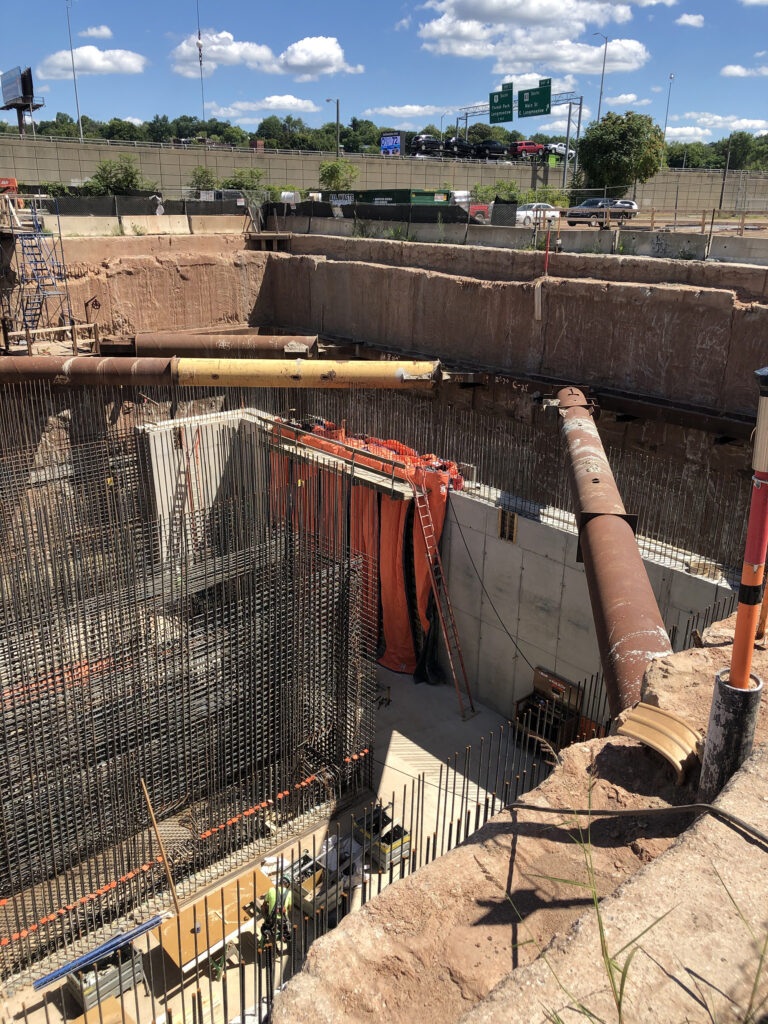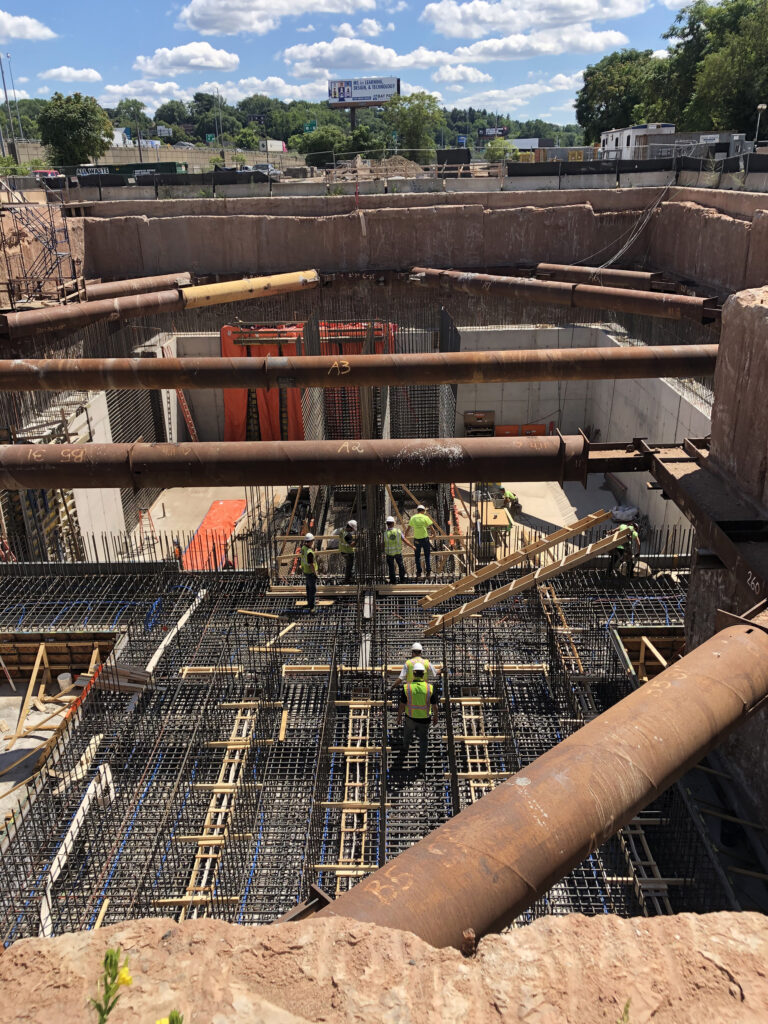This innovative sewer revitalization project was undertaken in the City of Springfield, Massachusetts to replace aging infrastructure and accommodate future system growth in the region. The primary goals of the project were to construct a new modern pump station to replace an aging 1938 station nearing the end of its useful life and to increase sewer-pumping capacity to the Bondi’s Island Waste Water Treatment Plant. Three (3) new 1,200 foot river crossing pipes were installed under the Connecticut River with pipe jacking techniques to add redundancy and improve service reliability. The increased pumping capacity will now prevent an additional 100 million gallons of combined sewer overflows from entering the Connecticut River in a typical year.
The project also utilized an innovative form of construction called “Construction Manager At Risk” (CMAR). Rather than designing a project and then sending it to bid for construction, CMAR incorporates the construction manager earlier in the process to help identify risks that may arise in the construction phase due to design. This garnered more price certainty and minimized project delays due to unforeseen circumstances.
GTR’s role on the project was to act as the Geotechnical Instrumentation Specialist for the Construction Manager/Prime Contractor, Daniel O’Connell’s Sons. In this role, GTR designed, installed, and monitored a comprehensive automated geotechnical instrumentation system to monitor critical existing structures during construction of the new pump station, the new influent structure at Bondi’s Island, and the new sewer piping under the Connecticut River. The scope of instrumentation included robotic total stations (AMTS) to monitor deformations of the US ACSE flood control wall and levees, the adjacent active Amtrak railroad tracks, and new and existing sewer infrastructure. GTR also implemented automated inclinometers and piezometers to monitor the performance of the slurry wall excavation support system, and performed automated vibration monitoring.

